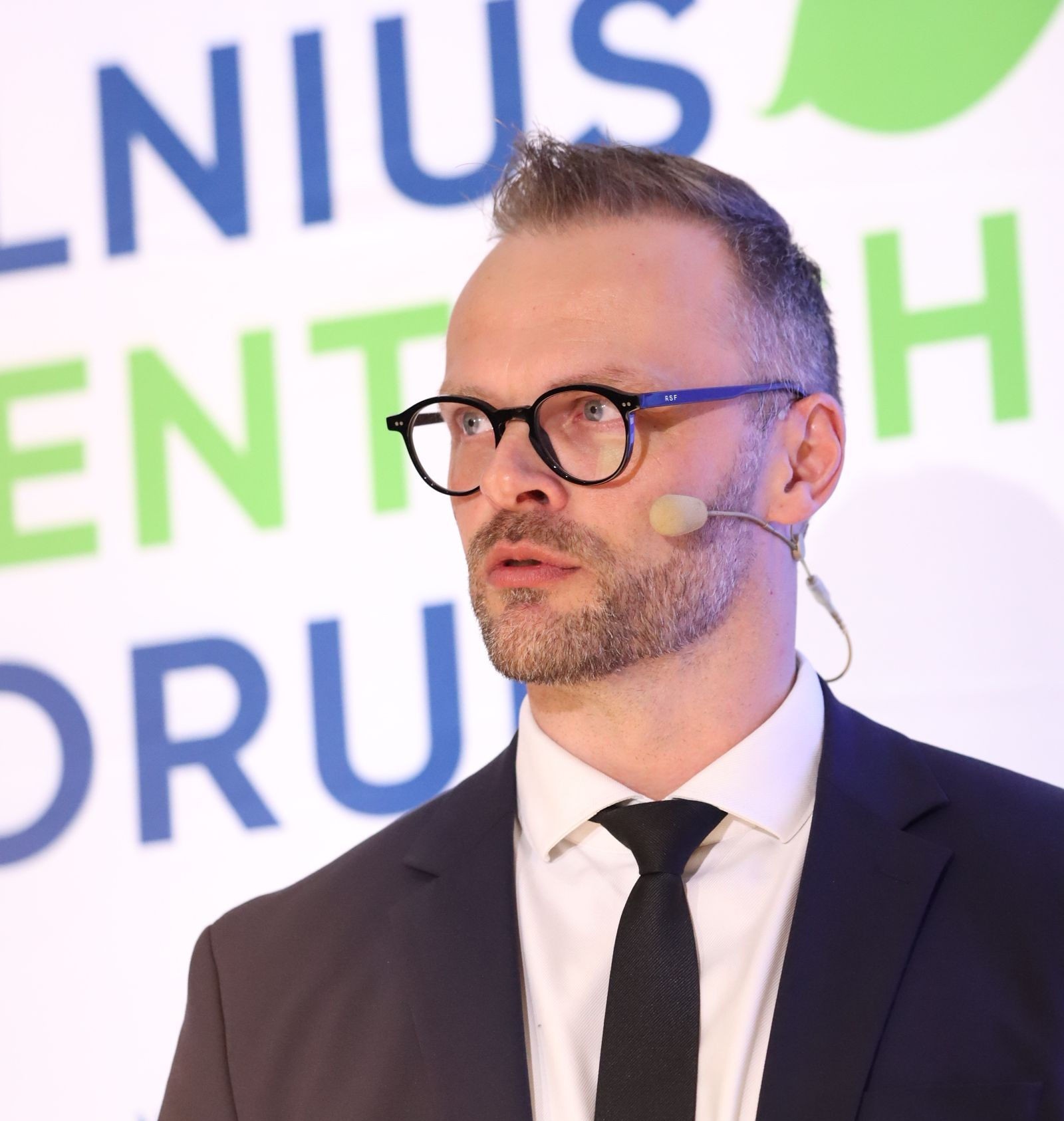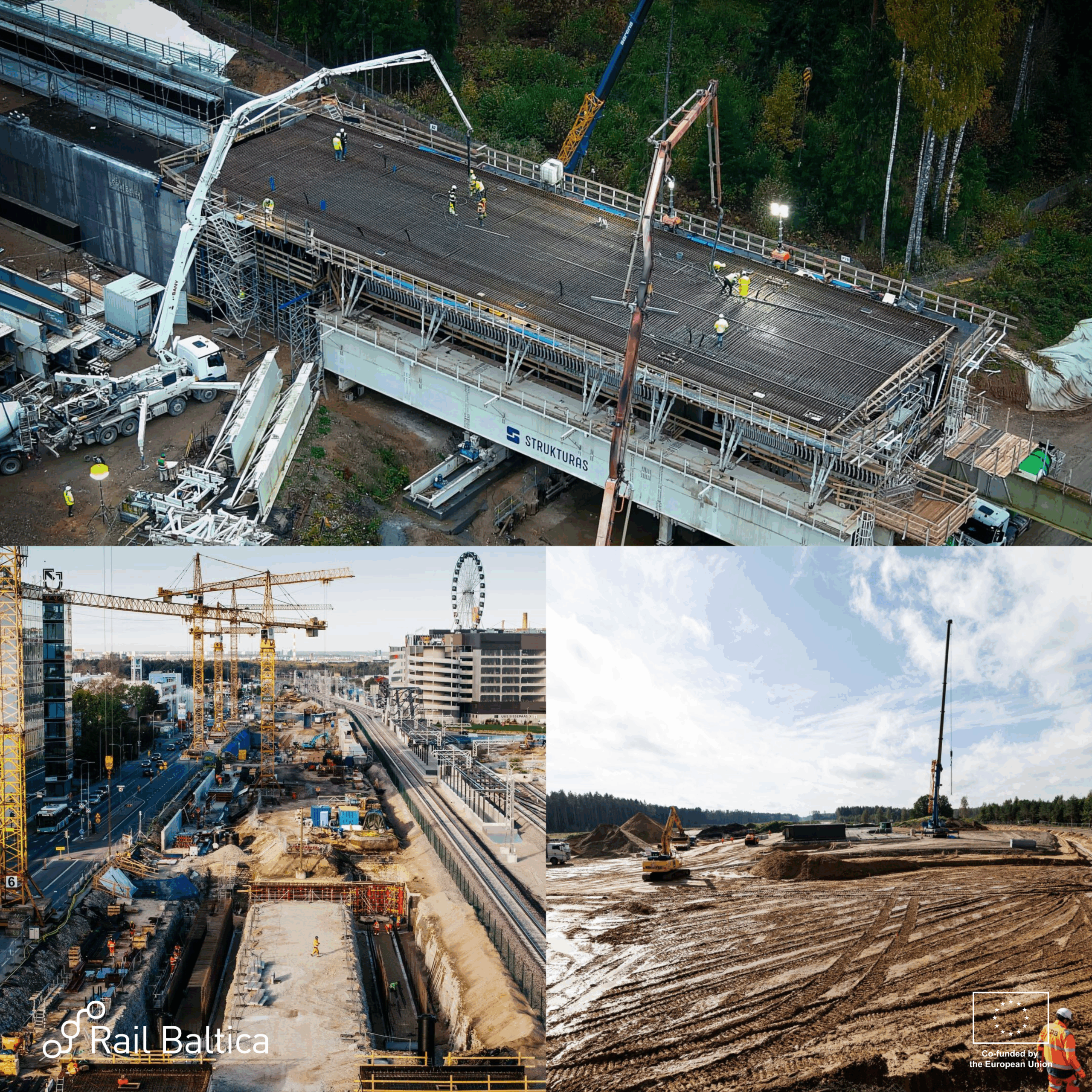By Marius Narmontas, COO and Management Board Member, RB Rail AS
Rail Baltica is the largest infrastructure project ever undertaken in the Baltic states, and it will shift the region from Europe’s periphery to its logistical centre. Like the early rollout of fibre-optic cables in 1990s which once seen as excessive but later the backbone of global communication, Rail Baltica shows that visionary, long-term public investment pays off across generations.
Driving economic growth
Rail Baltica is expected to generate a total economic impact of around €45 billion, combining both direct and indirect effects across the region. Direct socioeconomic benefits of €23.4 billion could boost Baltic GDP by 0.5–0.7 % annually. Beyond this, wider socioeconomic gains of up to €22 billion are anticipated through productivity growth, trade expansion, and innovation.
At its peak, Rail Baltica will represent around one fifth of total construction in the Baltics and nearly half of all civil-engineering activity, creating a stable pipeline of investment and employment that supports thousands of jobs and strengthens supply chains. Across Europe, rail transport already plays a comparable role as a driver of growth. The railway sector accounts for 5 to 7 % of the EU’s GDP, provides employment for roughly 888,000 people – about 8.4 % of all transport-sector jobs.
Strategic and security value
Beyond its economic contribution, Rail Baltica holds major strategic importance for both the Baltic region and Europe as a whole. The railway is being built to meet NATO and EU military mobility standards, enabling it to serve dual civilian and defence purposes. With a 25-tonne axle load and GC gauge, it is fully compatible with the European freight network. These technical specifications make the line capable of supporting heavy military transport and logistics operations across borders, a crucial consideration in the current security environment.
Supporting the European Green Deal
The project directly supports the objectives of the European Green Deal by offering a cleaner, more efficient alternative to road and air transport – two of the largest sources of greenhouse gas emissions in the EU. As transport emissions rose from 19.7 to 25 % in the past decade, shifting mobility to rail is key to reversing this trend.
Rail Baltica is designed to operate as a 100 % electric railway, powered entirely by renewable energy sources, contributing to both climate action and energy independence in the Baltic region. By 2030, it should cut over 150,000 tons of CO₂ annually rising to 400,000 tons by 2050.
Lessons from Europe’s flagship projects
Experience across Europe suggests that large-scale rail infrastructure projects, though questioned early on for cost or complexity, consistently prove their long-term value.
The Elizabeth Line in the United Kingdom, for example, faced years of delays and budget overruns, yet today contributes an estimated £42 billion to the UK economy and carries over 230 million passengers annually, reshaping London’s economic geography. The Betuweroute freight corridor in the Netherlands, once questioned for its viability, now moves more than 50 freight trains a day and generates up to €1.5 billion in annual logistics value, reinforcing Rotterdam’s position as a global trade hub. Similarly, the Øresund Link between Denmark and Sweden has created one of Europe’s most successful cross-border labour markets, with nine out of ten daily commuters living in Sweden but working in Denmark. Meanwhile, the Channel Tunnel and High Speed 1 have become integral to European commerce, carrying around 38 % of UK–France freight and underpinning £90 billion in annual trade.
These examples prove that bold infrastructure investments, though debated early, ultimately deliver transformative, lasting benefits.
Rail Baltica stands firmly within this legacy – a visionary project that will redefine connectivity across the Baltics and strengthen Europe’s economic and strategic cohesion.
Photos: GreenTech Vilnius; Rizzani de Eccher; Estfilm Production OÜ; KMG Infra; Merko Ehitus Eesti; Toms Norde.

